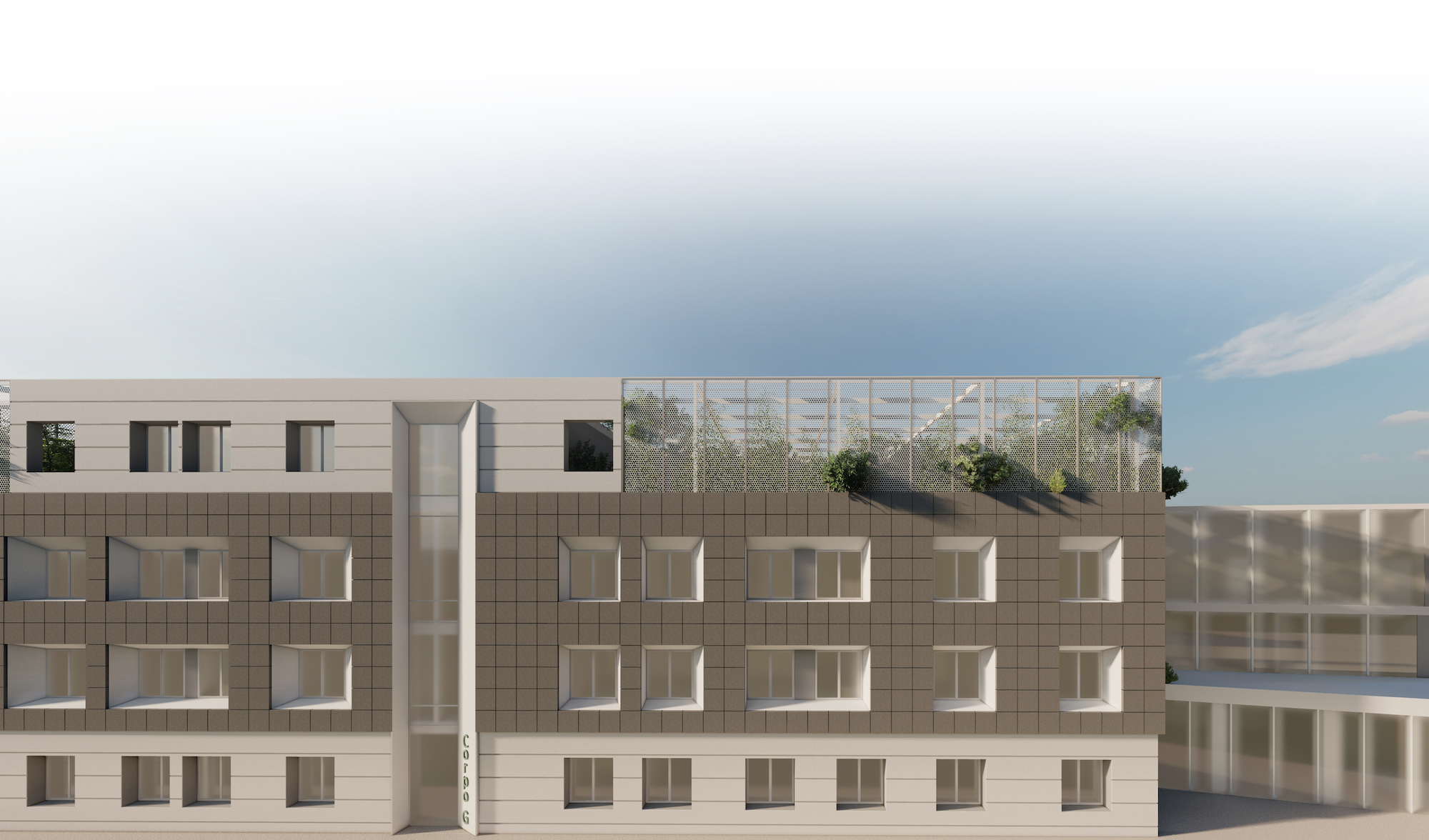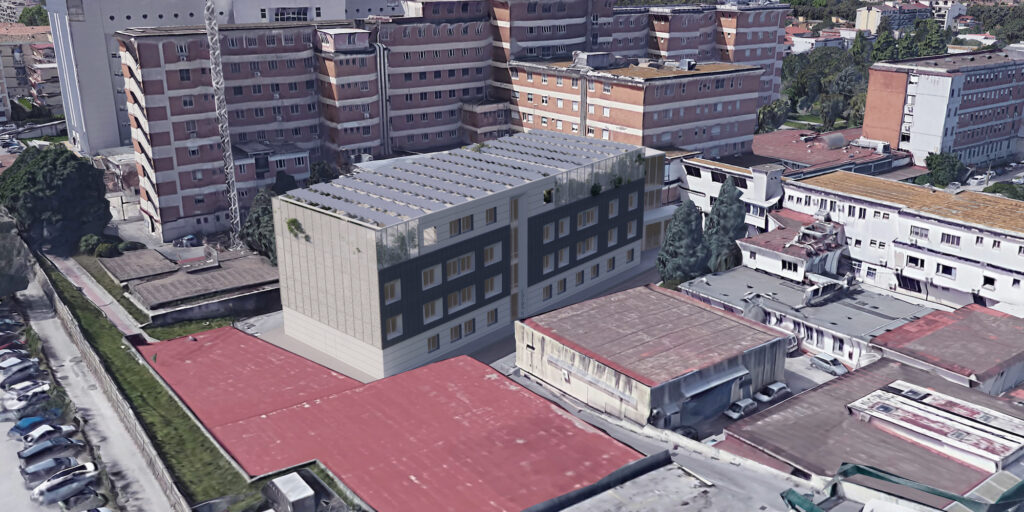This time we start with etymology…
The acronym nZEB stands for Nearly Zero Energy Building and is used to indicate a building with Nearly Zero Energy, i.e. High energy efficiency, whose operation requires “very low or almost zero energy requirements, covered to a significant extent by energy from renewable sources”.
This European directive, containing this European standard, was transposed and translated into law in 2013 in Italy, where it is stipulated that from 2021 all public buildings, whether new or subject to major renovation, must meet nZEB requirements.
These parameters are met by the new Pavilion G of the AORN (Hospital of National Importance) Caserta hospital, the demolition and reconstruction of which was designed by a team formed by Studio Stancanelli Russo Associati, Comma Engineering, Claudio Consoli, Melita Pennisi e Salvatore Palillo.
The pavilion will house the infectious department, outpatient clinics and laboratories of the Caserta hospital.
RENOVATION OF PAVILION F
In the same service, the team was responsible for the re-functionalization of the third floor of Pavilion F, used for Day Surgery, and the connection between the two pavilions. In order to maintain the physical connection, a portion of Pavilion F had to be demolished and rebuilt entirely in steel to ensure maximum flexibility in plan, slender structures and large spans, despite the high seismic acceleration of the site.
A BIM PROJECT DELIVERED IN 4 MONTHS
Despite anti-Covid restrictions, the team’s professionals delivered the design of the new Pavilion G and Pavilion F, first final and then executive, in just four months: from August to December 2020.
It was the change in work approach, incentivised by coronavirus social distancing, that allowed the 12 people in the team dedicated to the project to overcome its main difficulty, due to the timing and urgent nature of the work.
Among other disciplines, our firm was responsible for project management and coordination of specialist services. All this was developed using the BIM platform, a technology that Studio Stancanelli Russo Associati has been using exclusively since 2007, because it is not only an “information vessel” containing both graphic data (such as 3D drawings) and the specific technical attributes of the building (such as data sheets and characteristics), but also because it is a platform that facilitates the interaction of all project stakeholders (architects, engineers, builders, clients and managers), even remotely, facilitating communication, cooperation and improvements, throughout the complete lifespan of the project.
PAVILION G: SUSTAINABLE AND ANTI-SEISMIC
As mentioned, the new Pavilion G of the Caserta hospital is a highly efficient building, classified as energy class A+++.
It is in fact a highly sustainable building, able to maximise energy consumption and minimise management and maintenance costs. Features include heating and lighting systems that draw energy from photovoltaic panels (for the self-production of renewable energy); with absolute thermal comfort determined by an ETICS that ensures minimal heat dispersion. And above all, it is a state-of-the-art building in terms of anti-seismic insulation.
THE LATEST GENERATION OF SEISMIC ISOLATORS
For years, Stancanelli Russo Associati has been designing buildings with this characteristic, but in this case the choice proved to be strategic and necessary, in agreement with the structural engineers of Comma Engineering, with being a healthcare building, even when subjected to a seismic event, it must be able to guarantee the safety of those present and ensure that treatment activities are not interrupted.
To achieve this important objective, instead of using seismic-resistant structures, a decision to use seismic isolation systems was made. Indeed, the structure has a horizontal shear at the isolation plane, made up of the newest hi-tech isolators, which disconnect the pillars from the bottom zone, drastically limiting the accelerations that the hypothetical earthquake transmits to the part of the structure above the plane itself.
Unlike a “seismic-resistant” structure, an “isolated” structure is not a structure that opposes the earthquake with its own rigidity: it is the isolators that dissipate the seismic energy by friction, protecting what is superimposed on them. In this way, structures, people and equipment living in them do not suffer the full energy imparted by the violent shaking of the quake, but instead only a small percentage of it.
INTEGRATION OF KNOWLEDGE AND DISCIPLINES
The work of our firm and of the other professionals was strongly conditioned by:
- the necessarily tight deadlines for the delivery of the project in order to allow the Caserta health authority to start building the new hospital pavilion;
- The particularly specific equipment that a health facility requires, in terms of density and plant diversity.
In order to respond to these two problems, it was necessary to achieve maximum multidisciplinary integration between the firm’s more engineering-oriented soul and the more architecturally creative one with all the other members of the team, since functionality, multidisciplinary, aesthetics and safety are the pillars on which to perceive buildings and public spaces.






